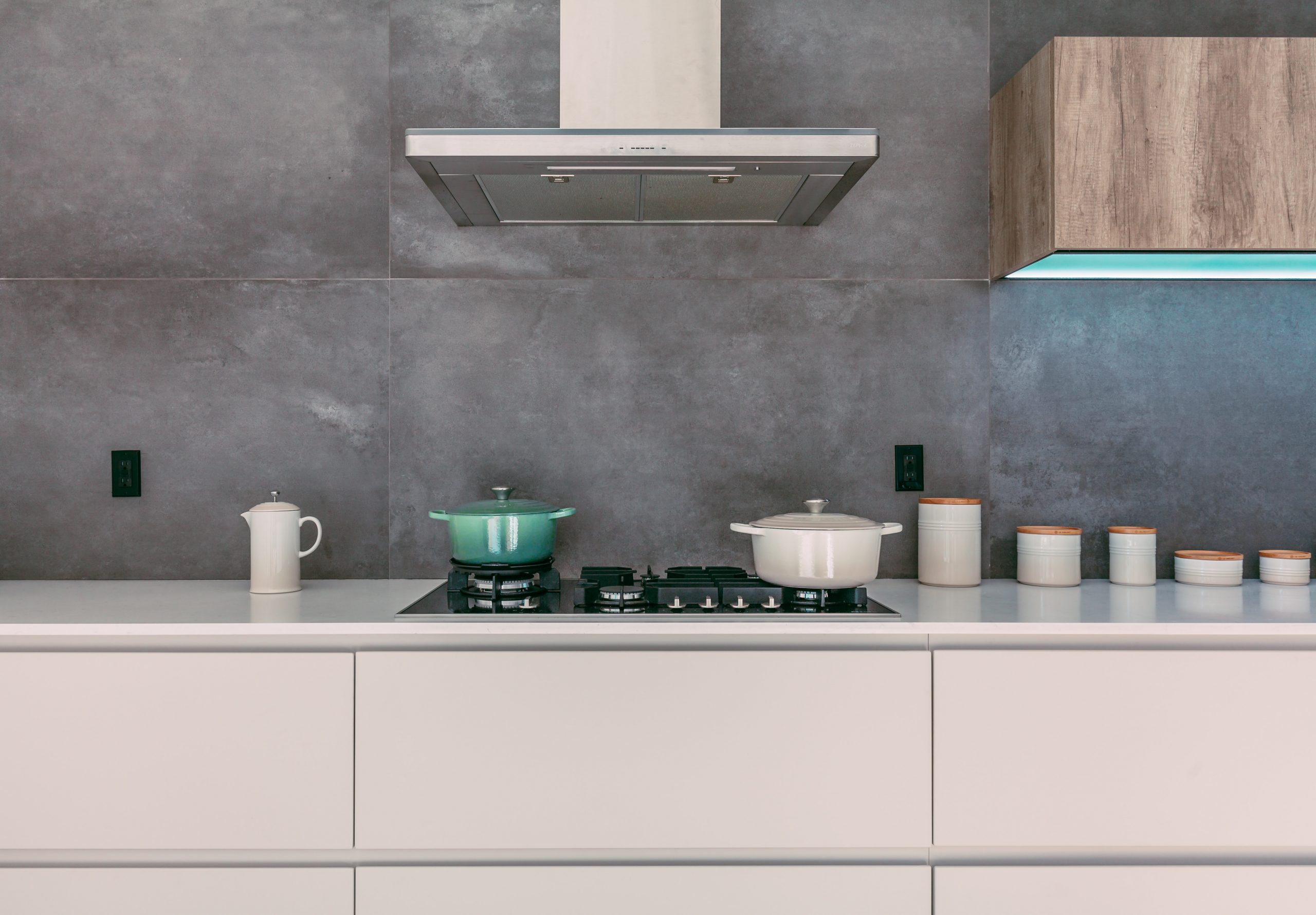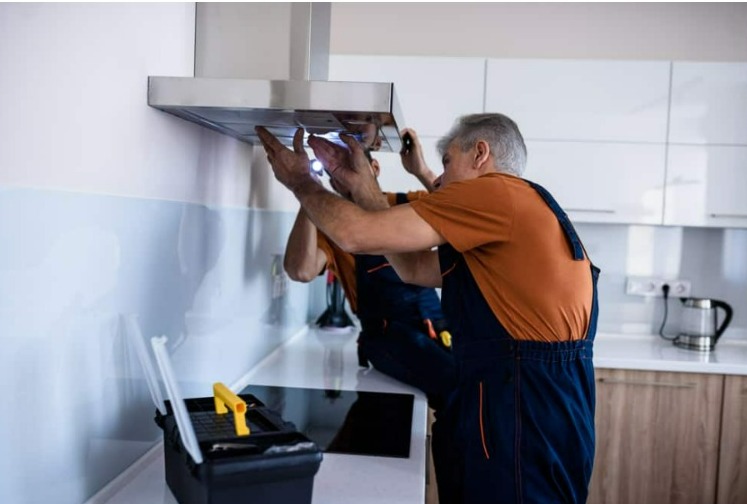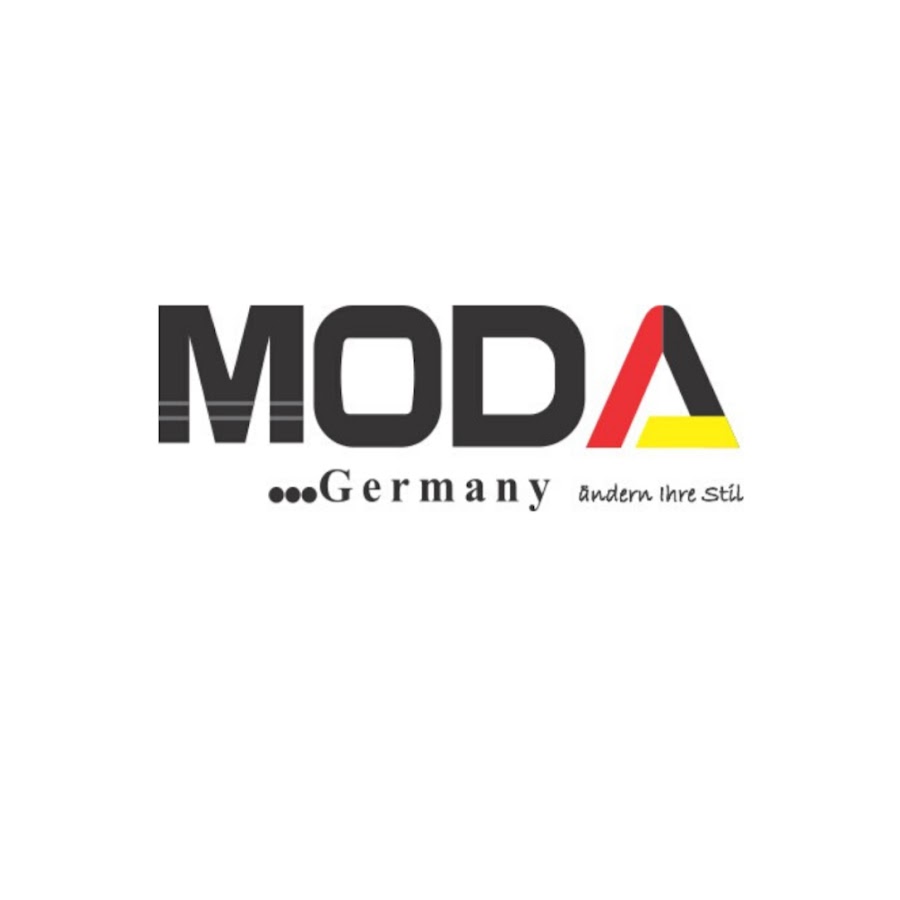Cooker hoods are thoughtfully crafted to effectively extract airborne grease, cooking odors, and other pollutants, ensuring they do not permeate throughout the home. This pivotal function not only guarantees a pleasant and enjoyable cooking experience but also plays a significant role in preserving the indoor air quality, particularly when employing high heat or frying methods. By diligently removing these impurities, cooker hoods contribute to a cleaner and healthier kitchen environment, allowing you to relish the art of cooking without any lingering concerns about air quality.

Types of Cooker-hoods for a Lankan home
a. Wall-Mounted Hoods: These are the most common type, mounted on the wall above your cooking range. They come in various designs and sizes to complement different kitchen layouts.
b. Island Hoods: Ideal for kitchen islands or peninsula setups, these hoods hang from the ceiling and offer excellent ventilation for stovetops located away from the walls.
c. Under-Cabinet Hoods: As the name suggests, these hoods are installed beneath the kitchen cabinets. They are perfect for smaller kitchens with limited space.
d. Downdraft Hoods: A sleek and space-saving option, downdraft hoods are integrated into the cooking surface and pop up when needed. They are often used with cooktops on kitchen islands.

Features of an ideal cooker hood
a. Air Extraction Rate: Measured in cubic feet per minute (CFM) or cubic meters per hour (m³/h), the extraction rate indicates how effectively the hood can remove airborne particles. Opt for a higher extraction rate for larger kitchens or heavy-duty cooking.
b. Noise Level: Look for cooker hoods with lower decibel (dB) ratings to ensure a quieter kitchen environment.
c. Filters: Most cooker hoods come with aluminum or stainless steel filters that trap grease and debris. Some models also include charcoal filters to neutralize odors.
d. Lighting: Ensure the hood has sufficient built-in lighting to illuminate your cooking area effectively.
a. Ventilation: For optimal performance, cooker hoods should be vented outside, expelling the air pollutants directly. If that’s not possible, consider recirculating hoods with charcoal filters.
b. Height: Install the hood at a height that allows at least 24 inches (60 cm) between the cooking surface and the hood for gas cooktops, and 30 inches (75 cm) for electric cooktops.
c. Professional Installation: Unless you have experience in electrical and ductwork installations, it’s best to hire a professional for safe and efficient setup.

In conclusion, a well-chosen cooker hood is a fundamental asset in any modern kitchen, contributing to both culinary success and a clean, healthy environment. It enhances the cooking experience and improves indoor air quality, especially during intensive cooking methods. With a wide array of styles and features available, finding the perfect cooker hood that complements your kitchen’s design and meets your needs is easily attainable. Remember to prioritize proper installation and regular maintenance to ensure optimal performance and longevity. Embrace the benefits of a quality cooker hood and savor the joy of cooking in a space that epitomizes both functionality and style.
If you are interested in purchasing a cooker hood, reach out to us on our hotline 070 666 7777 or visit our showroom at 130 Grandpass Road, Colombo 14.










